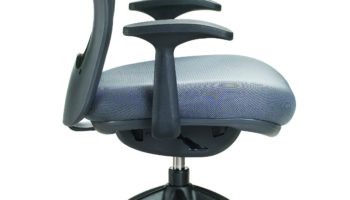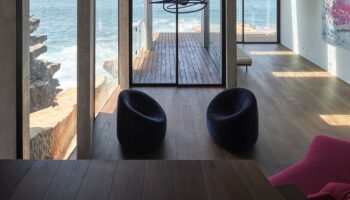EcoTimber’s Engineered Wood Floors
As is the case with any sufficiently annoying commercial tag-line, everyone West of the Danube can identify UPS’ ubiquitous “what can brown do for you?”
Woven Bamboo Flooring, Honey ColorWood. Manufactured by EcoTimber.
If we’re going to toss around abstractions as broad as colors and consider them meaningful metaphors (brown being synonymous with speedy and efficient transport), I think it’s time we delve into “green” a bit. For never before has one component of the visible electromagnetic spectrum been co-opted to such an extent. Yes, “green” is everywhere-from $3.99 rolls of paper towels to low-flow toilets, the concept follows us like an annoying but good-natured sibling, or, if you prefer, like the proverbial angel on the shoulder, urging you toward re-usable grocery bags and free-range eggs, while the horned, pitch-forked counter-point tells you that beef is still “what’s for dinner” and (to the adoring throngs of the RNC) to “drill, baby, drill.”
As with any well-intentioned concept that gets co-opted by the boys in advertising-and they all do, eventually-the idea of green/sustainable choices is increasingly muddied. Take the construction industry, for instance. In my (red) neck of the woods (the closest outpost of civilization being Crested Butte, an hour away by car), a sizable portion of builders have miraculously become “green,” a surprising development given that four years ago there were a scant two using the now-vaunted adjective. So what to make of this conspicuous spike? For one, it means there’s money to be made–a relative novelty nowadays, with construction starts at half the level they were four years ago. But if you can call yourself “green” of course, you may buck the trend, since the cache of the term is such that sustainably built homes have actually become profitable. But what does it mean to be “green?” If you insulate properly can you call yourself green? If a portion of your stain or paint is low VOC does this mean you build “sustainable” homes? And does the “FSC” stamp on certain of the lumber stacks at Home Depot mean the big orange box stores have become “eco-wise”?

At least one company-wood floor manufacturer EcoTimber of Richmond, CA-is aware of the potential hypocrisies of the “green” tag, and thus doing all they can to define an all-encompassing standard. Begun in 1992 as a company selling only tropical woods from sustainably harvested forests, EcoTimber was an early advocate of the creation in 1993 of the Forest Stewardship Council, which maintains rigorous standards for certifying sustainable wood; thus, the company was one of the first to sell a truly green wood-flooring product. According to Louis Buchner, EcoTimber CEO, specializing in wood floors rather than lumber made it easier to connect the brand name to a specific product: “Flooring comes in a box with a label on it. It’s manufactured, with layers, a finish, a color name. It’s harder for competitors to knock it off.” Just so, and also harder to be comprehensively “green,” since more elements in a product require more levels of sustainability. But EcoTimber achieves this multi-faceted “greening”: their products are 100% FSC certified (different than 25%, for instance, if you consult the fine print-see EcoTimber’s explanation of true FSC Certification) and contain no urea formaldehyde.
Lest this post slip away without remarking on the “goods”… EcoTimber offers a great variety of manufactured hardwood. Featuring exotic woods like Brazilian Cherry, Caribbean Rosewood, and South American White Tigerwood; as well as hardwood standards Maple, Hickory, and Walnut; in addition to eight varieties of Bamboo, all of EcoTimber’s flooring boasts “cross-ply construction”-which means the “wear layers” are veneers bonded to sub-layers. In addition to reducing the amount of harvested hardwood, this technique makes the product stronger than solid wood. And EcoTimber’s wear layers “are among the thickest on the market: 3.6mm (just over .14″), allowing many more sandings than the typical engineered floor's 1/10-inch ‘veneer’ layer.” And perhaps most impressively given the anemic market, EcoTimber is experiencing impressive growth: sales have gone from $800,000 in 2003 to a projected $8 million in 2008. Hallelujah! With such proven success, a pronounced dedication to sustainability, and a color palette to rival Picasso’s, EcoTimber deserves serious consideration.




Leave a Reply